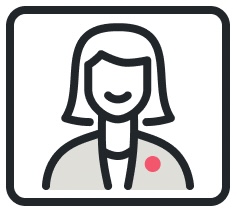- Community
- Topics
- Community
- :
- Discussions
- :
- Taxes
- :
- Investors & landlords
- :
- Where can I find deductions for rental property?
- Mark as New
- Bookmark
- Subscribe
- Subscribe to RSS Feed
- Permalink
- Report Inappropriate Content
Where can I find deductions for rental property?

Do you have an Intuit account?
You'll need to sign in or create an account to connect with an expert.
- Mark as New
- Bookmark
- Subscribe
- Subscribe to RSS Feed
- Permalink
- Report Inappropriate Content
Where can I find deductions for rental property?
I see you're using the online version of Premier. Under the Personal Income tab there's a section for Rental & Royalty Income (SCH E). Everything (and I mean *everything*) for rental property is dealt with in that section.
Rental Property Dates & Numbers That Matter.
Date of Conversion - If this was your primary residence or 2nd home before, then this date is the day AFTER you moved out, or the date you decided to lease the property – whichever is later.
In Service Date - This is the date a renter "could" have moved in. Usually, this date is the day you put the FOR RENT sign in the front yard.
Number of days Rented - the day count for this starts from the first day a renter "could" have moved in. That should be your "in service" date if you were asked for that. Vacant periods between renters count also PROVIDED you did not live in the house for one single day during said period of vacancy.
Days of Personal Use - This number will be a big fat ZERO. Read the screen. It's asking for the number of days you lived in the property AFTER you converted it to a rental. I seriously doubt (though it is possible) that you lived in the house (or space, if renting a part of your home) as your primary residence or 2nd home, after you converted it to a rental.
Business Use Percentage. 100%. I'll put that in words so there's no doubt I didn't make a typo here. One Hundred Percent. After you converted this property or space to rental use, it was one hundred percent business use. What you used it for prior to the date of conversion doesn't count.
RENTAL PROPERTY ASSETS, MAINTENANCE/CLEANING/REPAIRS DEFINED
Property Improvement.
Property improvements are expenses you incur that “better” the property. Basically, they retain or add value to the property. Expenses for this are entered in the Assets/Depreciation section and depreciated over time. Property improvements can be done at any time after your initial purchase of the property. It does not matter if it was your residence or a rental at the time of the improvement. It still adds value to the property.
To be classified as a property improvement, two criteria must be met:
1) The improvement must become "a material part of" the property. For example, remodeling the bathroom, new cabinets or appliances in the kitchen. New carpet. Replacing that old Central Air unit.
2) The improvement must retain or add "real" value to the property. In other words, when the property is appraised by a qualified, certified, licensed property appraiser, he will appraise it at a higher value, than he would have without the improvements.
There are rules that allow you to just flat-out expense and deduct some property improvements, if the total cost of the improvement was less than $2,500. It’s referred to as “safe harbor di-minimis” But depending on the specific situation, this may or may not be beneficial. Just be aware that not every property improvement that cost less than $2,500 qualifies for this. If this interest you, the rules can get complex. So a good place to start reading is on the IRS website at https://www.irs.gov/businesses/small-businesses-self-employed/tangible-property-final-regulations. The stuff on di-minimis starts about one page down.
- Mark as New
- Bookmark
- Subscribe
- Subscribe to RSS Feed
- Permalink
- Report Inappropriate Content
Where can I find deductions for rental property?
I need help finding the forms to claim my rental propery for 2019 in desktop premier
- Mark as New
- Bookmark
- Subscribe
- Subscribe to RSS Feed
- Permalink
- Report Inappropriate Content
Where can I find deductions for rental property?
@SUGARBEAR622 wrote:
I need help finding the forms to claim my rental propery for 2019 in desktop premier
To enter rental income, expenses and rental asset depreciation -
- Click on Federal Taxes (Business using Home & Business)
- Click on Wages and Income (Business Income and Expenses using Home & Business)
- Click on I'll choose what I work on
- Scroll down to Rental Properties and Royalties (Sch E), click on the start or update button
Or enter rentals in the Search box located in the upper right of the program screen. Click on Jump to rentals
Still have questions?
Questions are answered within a few hours on average.
Post a Question*Must create login to post
Unlock tailored help options in your account.
Get more help
Ask questions and learn more about your taxes and finances.
Related Content

syounie
Returning Member

ramseym
New Member

DallasHoosFan
New Member

eric6688
Level 2

alvin4
New Member

